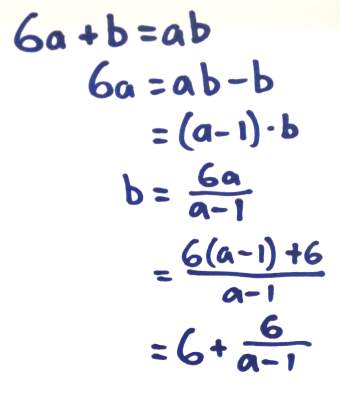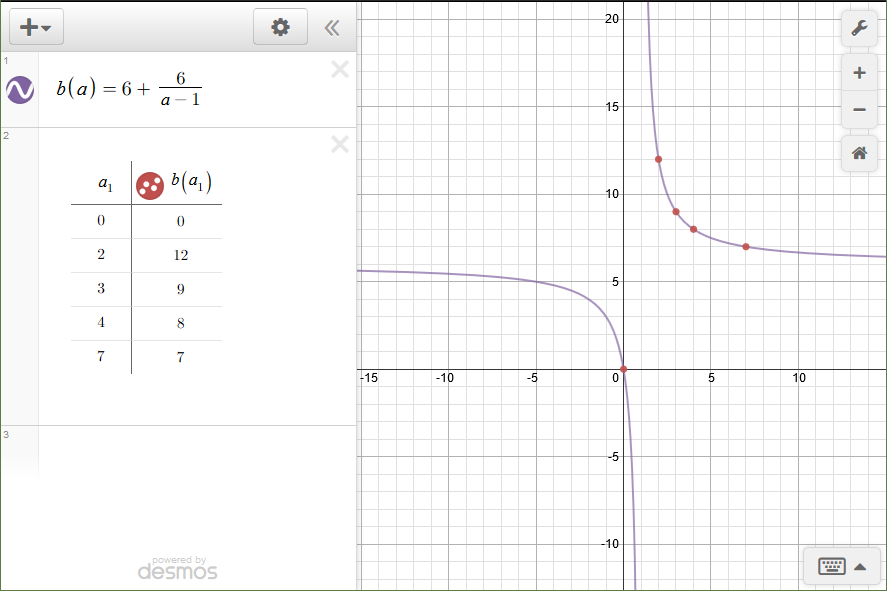The other day I posted this problem that one of my students discovered. We played around with it for a while and came up with this solution. I don’t know if this is the easiest or most elegant solution, but it’s what I have.
Quick recap, we’re trying to solve the equation 6a + b = ab, where a and b are non-negative integers. In Australian rules football, if a is the number of goals (worth 6 points each) and b is the number of behinds (worth 1 point each), the solutions to this equation are the scores where the total score is equal to the product of the goals and behinds.
Solutions can be found by trial and error, but how can we be sure we’ve found all of them? How do we know the solutions don’t just continue on forever? Well, it turns out that a little algebra and an understanding of asymptotes makes it clear that only a handful of solutions exist.
The original equation can be rearranged as so:

When graphed, this produces a hyperbola with asymptotes at a = 1 and b = 6 (see below). Which means that for a > 1, b is strictly decreasing and b > 6.
Since both a and b have to be integers, this puts an upper bound on a. Once b is 7, a can get no larger; if it did, b would not be an integer. As it turns out, b = 7 when a = 7.
We already have a lower bound: a = 0, as we only accept non-negative solutions.
So, we can simply use trial and error within this domain, and find these solutions:
Or, reported as football scores, 0.0.0, 2.12.14, 3.9.27, 4.8.32 and 7.7.49.
If we allow negative scores (not possible in football, but let’s do it anyway) we can get a few more solutions.
An interesting result is that b is always a multiple of a in these solutions. We actually noticed this result before finding all the solutions. a and a – 1 are coprime, so they share no prime factors. Since 6•a = (a – 1)•b, the prime factors of b must contain all the prime factors of a. A result that, as it turns out, didn’t end up helping us solve the problem, but is relevant to the name of this blog. 😉
The real question I have now is this: how do I go about turning this problem into a lesson?
